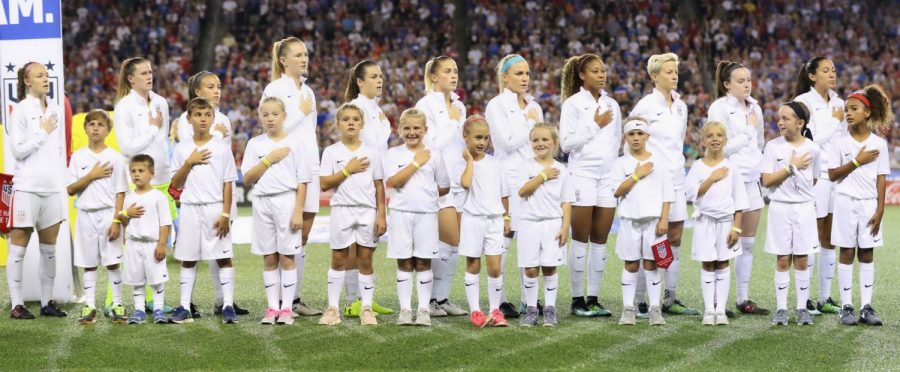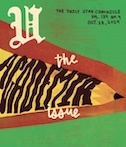The Gayest World Cup Ever: How the USWNT Helped the LGBTQ+ Community
October 2, 2019
This summer’s FIFA Women’s World Cup was nothing if not historic. Not only did the United States Women’s National Team became the first team to win four World Cups, but they were also a part of the World Cup with the most openly LGBTQ+ athletes.
In the 2015 World Cup, there were 15 out players and two coaches in the competition. That number doubled heading into this year’s cup. There were a total of 39 athletes from 14 countries that are publicly out who competed. USA coach Jill Ellis was the lone out coach and Sweden’s trainer Pia Sundhage rounded out the roster of out individuals.
There are likely more athletes who identify on the LGBTQ+ spectrum, but are either not out publicly or who live in countries where being gay is still punishable by time in jail or, in some cases, even worse.
The USWNT led the charge with the highest number of out athletes. At the time that the tournament started, there were five out players including captain and forward Megan Rapinoe. Both local and national fans were surprised to see USWNT and Utah Royals Defender Kelley O’Hara run up to the stands and kiss her girlfriend after winning the championship in July.
O’Hara hadn’t made any comments about her sexuality prior to the championship, so this was a different type of coming out party for her. She wasn’t publicly outed in a bad manner like Billie Jean King, nor did she make a long social media post about her sexuality. O’Hara, in a moment of total happiness, ran up to her girlfriend and greeted her with a kiss.
The other members of the team who are gay include defender Tierna Davidson, goalkeeper Adrianna Franch, defender Ali Krieger and goalkeeper Ashlynn Harris. Harris and Krieger are engaged to each other, while Rapinoe is dating WNBA star Sue Bird. All of the out national team players also play professionally in the National Women’s Soccer League. Rapinoe suits up for the Seattle Reign, Davidson plays for the Chicago Red Stars, Franch plays for the Portland Thorns and both Harris and Krieger play for the Orlando Pride.
The Netherlands, who played the U. S., and Australia all had four open members. The other teams with LGBTQ+ players included: England (3), Brazil (3), Argentina (1), Scotland (1), Norway (1), Spain (1), Chile (1) and South Africa (1).
While having so many openly gay athletes was not only good for the LGBTQ+ community, it was also good for the sport.
“You can’t win a championship without gays on your team, that’s science right there,” Rapinoe said to the media after defeating host France 2-1 to punch the team’s ticket to the championship.
That statement proved true for the USWNT. Rapinoe won both the Golden Boot, given to the top scorer in the tournament, and the Golden Ball, given to the best player in the whole tournament in the team’s journey to perfection.
The team also now holds multiple records for the Women’s World Cup, including most goals scored in the group stage (18), most goals scored total (26), the largest margin of victory in one game and the most goals scored in one match (13).
Krieger and Rapinoe are a part of an elite group of athletes who have appeared in three Women’s World Cup championship games with appearances in 2011, 2015 and 2019. Rapinoe also holds the record for the most number of consecutive games with two goals scored.
Not only was the victory huge for the USWNT’s argument to be paid the same as their male counterparts, but the heightened visibility of LGBTQ+ athletes told people across the world to not be afraid of being out and proud.
Having so many openly LGBTQ+ athletes is good for all sports across the board. If teams want to brag about how diverse they are and how anyone can play their chosen sport, they need to be more accepting of LGBTQ+ athletes.
It is 2019, and it shouldn’t matter who you love. Everyone should just be able to love who they want and play the sport that they love as well.
The 2019 FIFA Women’s World Cup went down in the record books for many reasons, and this is only the beginning for not only LGBTQ+ players in women’s soccer, but also athletes across all sports. Someday, we won’t have to talk about the orientation of players on a certain team but rather how much of a baller they are.












